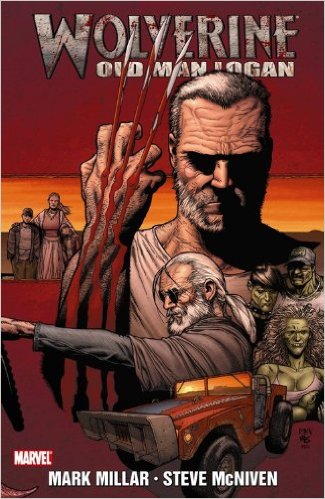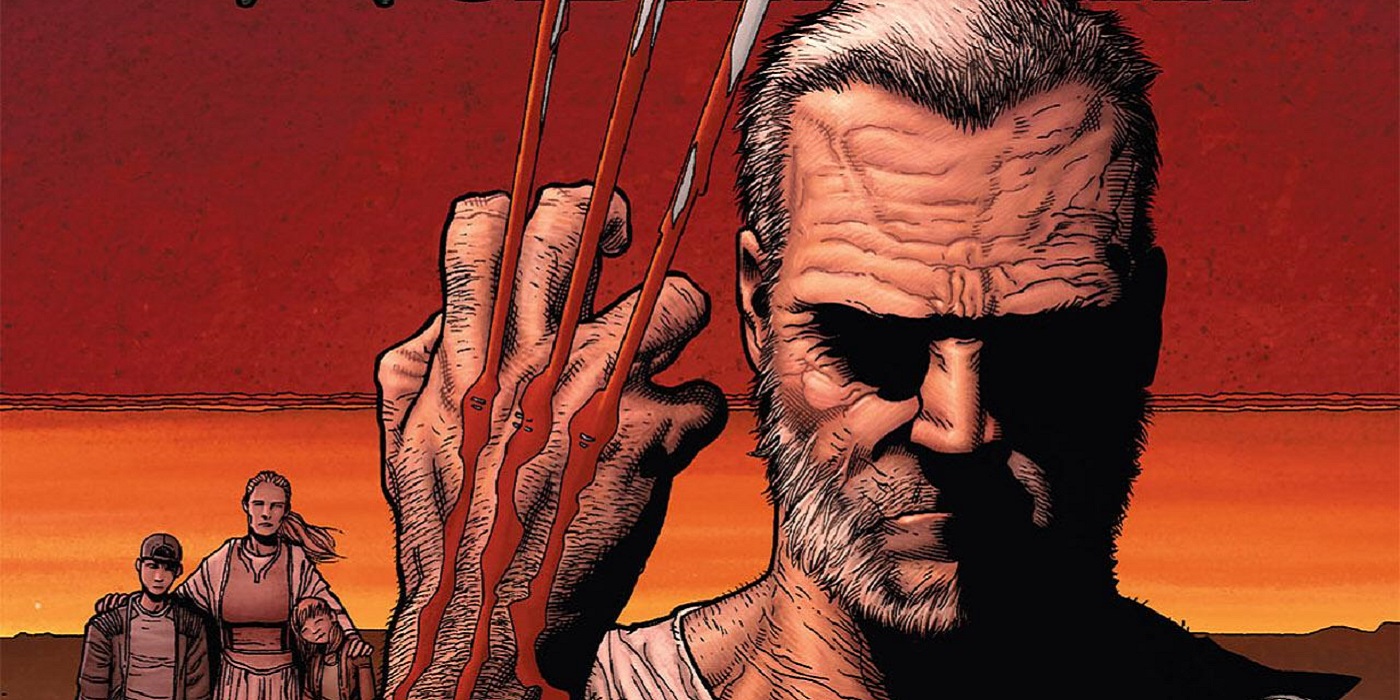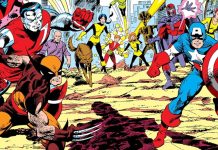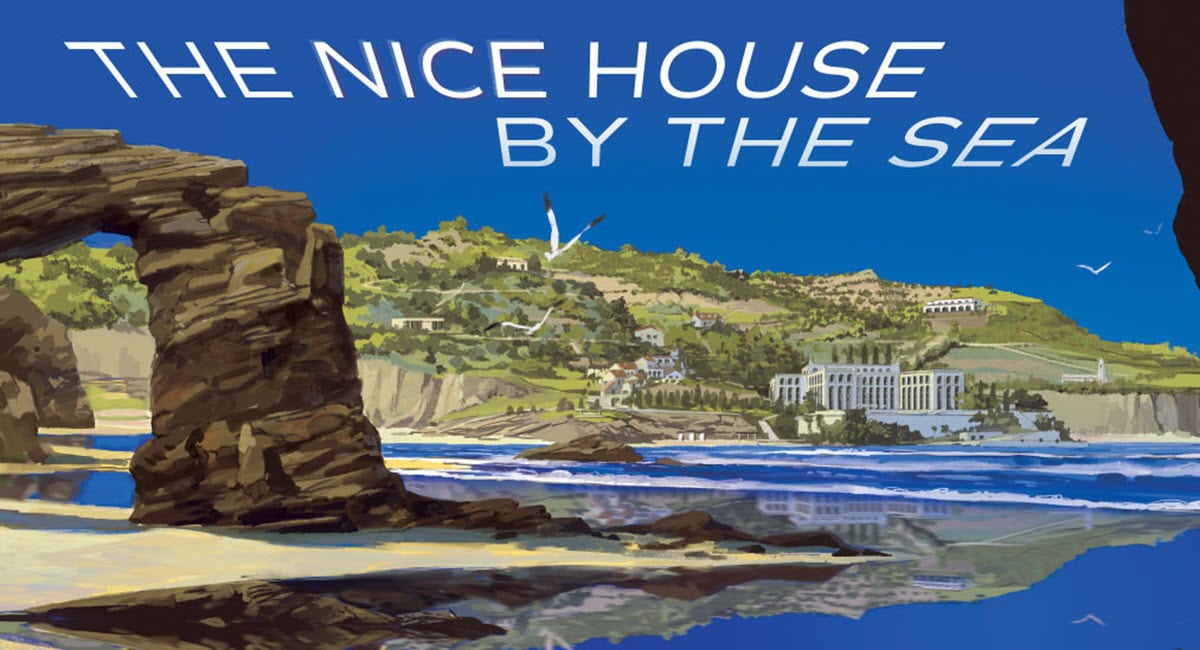
Marvel’s argument for this approach has typically been that new #1 issues both boost sales and pull in new readers. It’s true that a #1 issue tends to sell quite well on the direct market—but since retailers are ordering inflated amounts sight unseen, it’s an artificial bump at best, and sales drop sharply afterward. In fact, according to an exhaustive and entertaining analysis by the writer and game designer Colin Spacetwinks, this constant churn badly erodes the readership. G. Willow Wilson’s excellent Ms. Marvel, a series starring a young Muslim heroine from Jersey City, debuted at a circulation of roughly 50,000 before holding steady at 32,000; the relaunched version a year later began at around 79,000 before dropping sharply to a current circulation of around 20,000. “Marvel’s constant relaunching … has been harmful to direct market sales overall,” Spacetwinks writes, “as well as harmful to building new, long-term readers.” With every relaunch, it becomes easier to jump off a title.
While Elbein does a fine job of rounding up all of Marvel’s most obvious woes, the ones that intrigue me the most are the invisible ones: the strange edicts on publishing from owner Isaac Perlmutter. The whole FF/X-Men/Inhumans mess for instance, or the even more perplexing problems with the book market.
Marvel has an awful backlist. They have trouble keeping books in print even when the direct market is clamoring for them, as Todd Allen detailed in this story from 2012:
“[It’s been going on] at least five years, possibly more,” says Brian Hibbs, owner of San Francisco’s Comix Experience. “There’s no publisher I remotely have the same problems I have with Marvel.”
“At least five to ten years,” says Eric Kirsammer, owner of Chicago’s Chicago Comics. “I feel like I’m not part of the logic loop.”
“At least fifteen years,” says Nick Purpura, manager of New York’s Jim Hanley’s Universe. “In recent years, especially, there’s been little rhyme or reason to what’s in print or in what format.”
Marvel has gotten a little better at this as the MCU has become more successful; Old Man Logan was a bestseller for them when the Logan movie hit, and various Guardians of the Galaxy books seem to be doing well now. But in the book world, a backlist is a license to print money; you put out a book, keep it in print and rake in orders, no new costs except printing. Given Marvel’s dream treasury of comcis classics this should be a very easy thing. But it isn’t.
While working on my recent piece on comics in libraries for Publishers Weekly, I came upon yet another problem for Marvel: working with libraries – another source of easy money for most publishers – isn’t much of a priority for them. I had to cut this section out of my piece because of space, but librarians weren’t shy about it.
As one prominent librarian put it to me, “People [in the library space] ask me is there a way to contact Marvel and I say, ‘nope it’s just impossible.’ Often, they’re people who want to buy 200 copies of something. I say ‘Good luck!'”
Another librarian noted that Marvel rarely has representatives at library shows and “they’ve never shown any interest in collaborating in any way or helping out or being involved.”
Now, to be fair to Marvel, they aren’t the only publisher who doesn’t exhibit at ALA or make a representative more available to the library world. They are the most inscrutable, however.
Marvel’s bookstore distributor is Hachette, who reps them at BEX (Book Expo), ALA and other book world shows. Here’s the Graphic Novel event schedule for this year’s American Library Association annual show in Chicago. Kids book publishers, and DC (an early adapter on the library front). Image, Abrams, and Dynamite are among those with a robust presence, including panels and signings. There’s no obvious sign of Marvel participation at all.
EDITED TO ADD: As the comment below reminded me, Marvel is also the ONLY major publisher not available on Hoopla, the digital lending service for libraries that has revolutionized digital lending. I haeard some rumblings that that may be changing but we’ll have to wait and see.
Stronger ties with the library world – which can make up as much as a third of a publisher’s sales – are low hanging fruit for Marvel. It’s true that young readers love Marvel characters and librarians are almost obliged to order their books. But coasting on the pocketbooks of Marvel zombies is a strategy that seems to have become less and less effective every year.










I’ve been reading comics I can’t afford through Hoopla, an app that lets me borrow ten titles a month from my local library system. Most of the big publishers are there, but Marvel is not.
Ditto to the first commentor. Hoopla has every major and minor comic publisher except Marvel. I read 1 year old DC comicsnin hoopla and It has made me switch to DC fandom in general.
Thanks for the kind words, Heidi! I hadn’t even heard of the library issue–that’s just stunning. I can’t imagine why they’d be so difficult.
To be fair, Marvel has gotten much much MUCH better at keeping books in print since the original article.
-B
This *actually* blows my mind. If this isn’t a prime example of mismanagement, I don’t know what is. Especially considering how much more accessible libraries are for children, they are doing a teeerrible job of introducing their products to future audiences. TERRIBLE.
A point about Hoopla: Unlike physical graphic novels, which the library can purchase once and then check out to as many patrons as want it (or until it falls apart, but that’s a different rant…), your library pays Hoopla a fee each time someone ‘borrows’ a comic on Hoopla (a portion of said fee presumably going to the publisher). Most libraries employing Hoopla will have a set amount that they will spend on Hoopla for the fiscal year, and if that pool of Hoopla money is spent out, they have to either raise their limit or restrict Hoopla.
Which is not to say that your library doesn’t want you to use Hoopla; they do! But if you ‘borrow’ a comic through Hoopla, be sure to read it!
Another point of interest: The finalists for the 2017 Dwayne McDuffie Award for Kids’ Comics were announced yesterday; see http://a2caf.com/post/161023029226/dwayne-mcduffie-award-for-kids-comics
Of the ten finalists, two are from Marvel: Moon Girl and Devil Dinosaur, vol. 1: BFF; and Patsy Walker, A.K.A. Hellcat! Vol. 1: Hooked On A Feline.
You’ll note that these are two of Marvel’s poorest-performing comics as individual issues in the direct market. But libraries across the country will use awards lists such as this to inform their graphic novel ordering. It will not surprise me at all if collection sales for these titles outpace their individual issues. (And since most library sales are through library book vendors, they will be unreported by Bookscan and Diamond…)
Marvel also does a really poor job with Kid’s Publishing. I have a baby and there are tons of board books and other toddler level books featuring DC characters. My comic shop even carries them. I’ve only ever seen 2 Marvel board books, one about numbers and one about abcs. They do a little bit better for older kids with their Golden Books. But right now, my baby mostly gets introduced to DC stuff. There’s way more baby merchandise, clothes and books. It may seem silly, but kids pick up on this stuff really young. My best friend’s 2 year old can name every DC character and will tell you all his favorites but doesn’t know the marvel characters nearly as well.
^^^ I don’t know about Patsy Walker, but apparently Moon Girl and Devil Dinosaur sells well at school book fairs. Which is probably why it still exists.
My local library system has an AMAZING graphic novel and manga section. Content is very diverse and it leans heavily towards Middle Reader and YA. Fantagraphics, D&Q, Boom!, Darkhorse, Image etc etc. They even have prominent self published books….superhero stuff is MABYE 10% of the collection.
If Marvel wants to keep passing on entire generations of young readers that’s on them. I’m sure they’ll find a way to blame consumers and diversity for sagging sales though.
Dave,
Thanks for the comment about Hoopla. It isn’t revolutionizing digital lending. It’s increasing the cost of digital lending and making sure libraries can never meet demand. I’d much rather see basic ebook availability or have them sign on with Comics Plus or open the Marvel Unlimited platform to libraries.
When you are a comic book publisher run by people who don’t give a flying bleep about publishing comic books, these are all the kind of problems you get. I really think that gets at the core of what’s wrong with Marvel. From Quesada on down, they want to be in any other business but publishing comics.
There are a lot of smart comments in this thread, but this one above ” From Quesada on down, they want to be in any other business but publishing comics.” is utter nonsense.
I may have disagreed with people at Marvel over this and that but to say they don’t love comics is ludicrous. From Quesada on down. Joe Quesada loves comics, and loves making them. No one would work at Marvel if they didn’t love the medium. In fact it’s that love which is the one thing that has kept them going through questionable business decisions.
I respect the people who work at Marvel as colleagues. That doesn’t mean I have to agree with what they do or not criticize them.
Let’s stay smart and civil here. Let’s be our best selves.
DC isn’t much better. DC has a better licensing department than Marvel, which is kinda strange, given that Disney is a marketing powerhouse.
Disney Press does exhibit at BEA and ALA, and routinely pushes their latest Marvel prose title (Black Widow and Squirrel Girl…RECOMMENDED).
DC hasn’t generated much of a backlist since 2011, since the New 52. Batman is about it… the rest are soap operas, and who watches old episodes of soap operas?
DC should have a greater presence… Penguin Random House Publisher Services has an aisle for their clients. If Dark Horse and IDW can exhibit, why not DC?
Marvel doesn’t have much of a backlist, as they don’t have many done-in-one titles, titles which are usually set in a parallel timeline. I also think their mindset is aimed at the Direct Market… once a book is ordered in the first month, the sales disappear almost instantly afterwards. (Take a look at the ICv2 Top 300 GNs each month… most don’t repeat.)
Marvel EAN: 97807851* 6695 titles (so far… 10,000 possible)
385 cancelled. 508 are ebooks.
5771 are books
2556 are out-of-print.
Newest title in that group: Marvel Masterworks: The Sub-Mariner Vol. 7 (January 2016)
2766 active titles in print. Oldest: “Ultimate” titles, Masterworks,
But spot checking some of these active titles on BN.com show them only available from associate sellers.
What’s the general print run for a GN? 10K?
Does anyone have access to Hachette inventory? Ingram? Baker & Taylor?
Is it also possible that with so many superhero movies and TV shows being released these days, they’re cannibalizing fans who normally would’ve gotten their superhero fix through comics? I know DC’s sales are better these days, but I wonder if the margin for error has been reduced thanks to a pretty well-done crop of superhero shows and films.
Marvel may not be on hoopla, but they do have their Unlimited service which is some 20,000 issues strong at this point.
I find it ironic that comics-based movies dominate the box office, and comics-based TV shows are thriving, but sales of actual comic books are (it seems) in a downward spiral.
The Atlantic article points out that the industry never fully recovered from the mid-’90s collapse of the speculator market. And now, with comic books costing $4 and up, they’re simply too expensive for most people to collect. The mania for crossovers, reboots and “events,” which oblige you to buy nearly the entire line to figure out what is going on, doesn’t help.
I do most of my comics reading now on Comic Book Plus, which has has free public domain comics. Currently working my way through the Quality Comics line (1937-1956), then it’s on to Lev Gleason, Fawcett, Charlton, etc. I also check trades and graphic novels out of the public library. I haven’t spent money on anything from Marvel since they dropped the Essentials reprint line in 2013.
“But in the book world, a backlist is a license to print money; you put out a book, keep it in print and rake in orders, no new costs except printing.”
New costs would also include warehousing. There have been rumors that warehousing costs are one of the drivers behind Marvel (i.e., Ike Perlmutter) not keeping most of books in print for a long time and instead treating them like really expensive periodicals.
Comic stores like the online retailer Impulse Creations http://www.impulsecreations.net will sell direct to libraries at a discount with weekly shipping and do either P.O.’s or p-cards. there are the retail options as well.
If you’re even a casual fan of comic books you definitely know of a handful of superhero titles: The Dark Knight Returns, Year One, The Killing Joke, The Long Halloween, Hush, Kingdom Come, Whatever Happened to the Man of Tomorrow, All-Star Superman.
And there’s a better shot than not that you’ve heard of: Crisis on Infinite Earths, Infinity Crisis, Flashpoint, Blackest Night, Knightfall, New Frontier.
What all of those stories have in common is that if you go into any Barnes and Noble in the United States you’re guaranteed to see at least 90% of those stocked on their shelves.
You’re also guaranteed to see at least a handful of volumes from Scott Snyder and Grant Morrison’s Batman runs and Geoff Johns’ Green Lantern run, Plus Secret Identity, Flash Rebirth, Arkham Asylum, those awful Earth One books, the list goes on and on and on.
DC has an impressive stranglehold on the bookstore market that Marvel has seemingly never tried for.
The only Marvel book I’m confident would be stocked in any B&N is Civil War.
The Ultimate line used to be a guarantee, but recently I’ve even seen those titles disappear completely from stores. Which is really weird to me. You’d think that whole line could be an evergreen series of volumes.
Obviously part of this is due to DC having a more impressive array of self-contained stories. But DC also does quite well with long series.
The fact that Marvel hasn’t even tried to elevate their titles to that level through aggressive printing/marketing seems like a massive missed opportunity to me.
Do they “love” making comics? It would appear they love everything but. How many times has Quesada, Brevvort, etc., made statements that displayed the chip on their shoulder for how comics are perceived as “Bam!” and “Pow!” and wanted to be seen as deep, serious art?? Brevvort himself said they got rid of thought balloons because “they reminded people too much of comics” (!!!!)- you can’t make this up! These people are ASHAMED of comics. They want to be in film. It’s obvious.
For those in the know, how does Disney deal with libraries? I can’t believe they’d ignore the market the way Marvel does.
Story time.
A very close family member works in a very large, and very well used library system.
A few days ago this family member brought home a ‘new book’ which had just arrived at the library for general distribution. The family member, being an employee, got to check it out first.
Now, this book is remarkable in that it is very expensive. More expensive than even a Marvel Omnibus. Also, this book didn’t have any new or unreprinted stories in it, or even material from volumes which have gone OOP. For the money, the library could have bought a half dozen Epic volumes. It was a collector’s item and intended as such.
But the library, seeing the title, went and bought it.
I’d like to think that an agent of Marvel might have been able to guide libraries into making smarter purchases (two runs of MS MARVEL TPBs, a half dozen Epics, etc). But for now, the library owns this slab, and it’ll probably be destroyed through use in about two years.
And the big kicker about this book? It’s cover is from an issue which isn’t even reprinted in the book.
Another challenge for DC and Marvel are progressive educational philosophies. You’re seeing a lot of schools depending on their philosophy having a “no branded characters” policy for clothing, reading material etc. There are very sound reasons for it.
Librarians at the school level might be able to justify a graphic novel collection better that doesn’t have a ton of super heroes as having more educational and literary merit.
@torsten
From my experience, despite the fans not warming to the New 52 did produce some backlist books other then Batman:
Justice League: Origins
Francis Manapul and Brian Buccellato – The Flash Volume 1
Geoff Johns Aquaman vol 1
All seems to be reprinted and restocked frequently in the UK stores I’ve been in and are avaible at mainstream shops like HMV, WHSMITHs, Waterstones.
With the new Wonderwoman movie coming out I expect the New 52 Wonderwoman vol 1 also take a place on the backlist going forward.
The expanision of your backlist is a slowly accrude process with only at most 5% of your publications ever making the list.
It’s nice when comics shops reach out to libraries, but most libraries, officially, have to acquire books through specific vendors, because governments are involved.
Many librarians will buy books via Kickstarter, shops, and shows, and then donate the title to the library.
The problem is not ordering… most libraries order books as soon as they are published and available.
It’s restocking and replacing which is the problem.
As for superhero backlist, we’ll see. But look at pre-Flashpoint DC titles. Aside from Morrison’s JLA, what other DCU titles remain continuously in print? (Okay… Hush. Self-contained.)
Didn’t rebirth reset the storyline? Why would a fan read the New 52 volumes if they don’t matter to the current timeline/storyline?
FURTHERMORE… DC’s “Earth One” line was successful, but there has been about one volume a year in the franchise… There should be, at least, one a quarter, and by now, seven years since Superman appeared, one every two months. It’s been almost two years since Aquaman and Flash were announced.
“I may have disagreed with people at Marvel over this and that but to say they don’t love comics is ludicrous.”
One can love comics, and one can especially love comic book characters, without really caring all that much about being a publisher of those comics or even about the artform itself.
I wouldn’t say Quesada doesn’t love the artform, the guy was an artist after all, but I have a hard time looking at his record and saying that he really wants to be Stan Lee or Jim Shooter or Julile Schwartz. I’m not even sure he wants to be Tom DeFalco. He’s a comic book creator who got the job at a time when the whole industry was in trouble and if you want to credit him for some of the recovery from those dark days, go ahead.
But I’m not sure that Quesada wants to publish comics so much as he wants to continue being the proprietor of the Marvel Intellectual Property Warehouse.
Mike
Comments are closed.